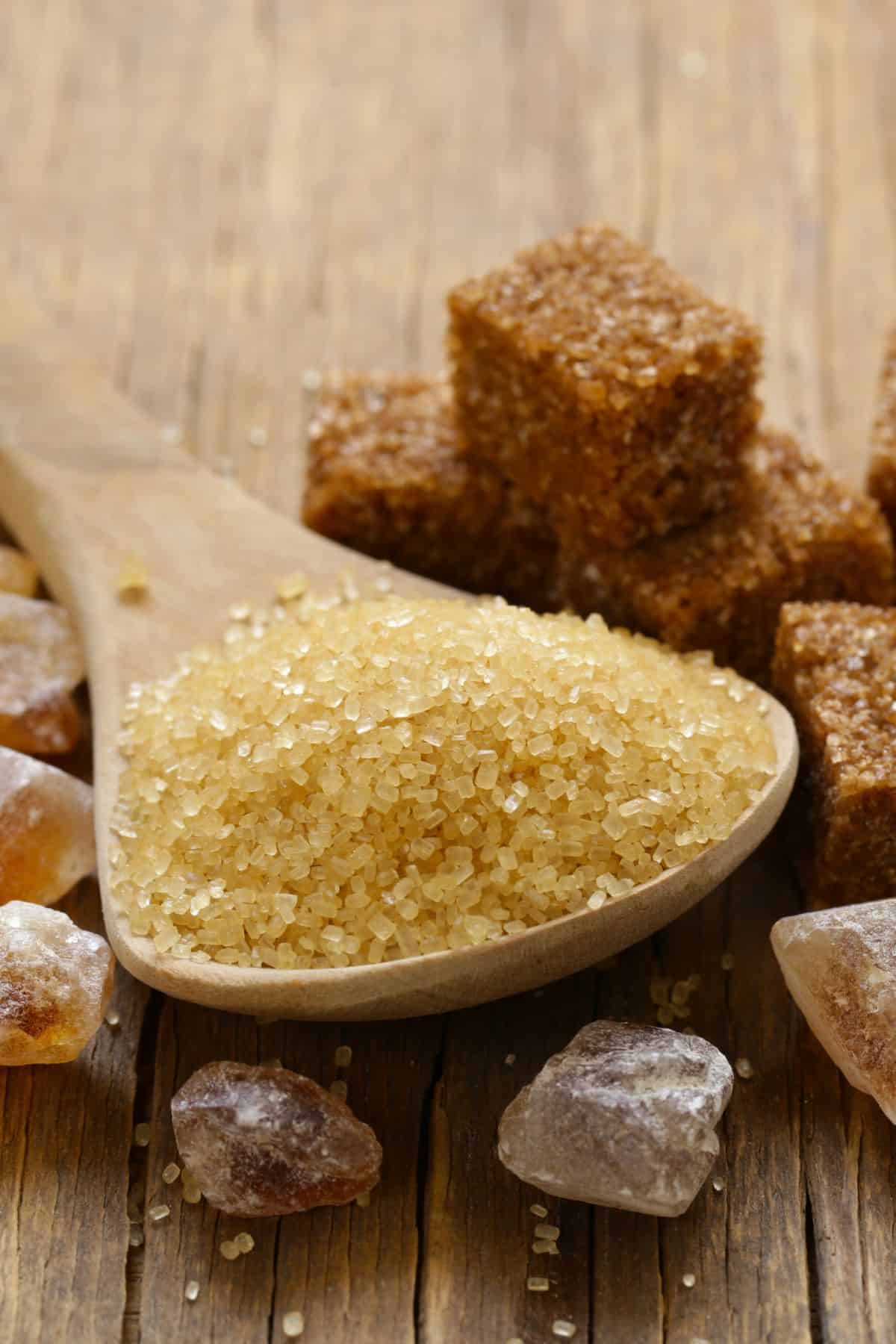An Extensive Guide to the Ecological Impact and Sustainability Practices in Cane Sugar Handling
The ecological impact of walking stick sugar handling offers a complex range of difficulties that warrant cautious evaluation. From soil destruction and extreme water use to the carbon impact linked with cultivation and production, the consequences of standard methods are significant. What details techniques can be applied to strike a balance between productivity and ecological stewardship?
Review of Walking Cane Sugar Handling
Cane sugar processing involves a series of methodical steps that transform sugarcane into refined sugar. Initially, harvested sugarcane is delivered to refining facilities, where it undergoes cleaning to remove dirt and debris. Following this, the walking stick is crushed to extract juice, which is after that cleared up by removing contaminations through heating and the addition of lime.
The made clear juice undergoes dissipation, where water is removed to concentrate the sugar material. These crystals are divided from the remaining syrup utilizing centrifugation, resulting in raw sugar.
The final item is then dried and packaged for distribution. Throughout this whole procedure, keeping effectiveness and quality assurance is necessary to make sure the sugar meets industry criteria. Each action in walking cane sugar processing not only contributes to the last product yet additionally has implications for source use and waste generation, establishing the phase for discussions on sustainability and ecological impacts connected with sugar manufacturing.
Environmental Obstacles of Manufacturing
The production of walking cane sugar presents a number of significant environmental difficulties that warrant attention. One main problem is the extensive use of agrochemicals, including plant foods and pesticides, which can lead to soil deterioration, biodiversity loss, and contamination of regional water resources. The overflow from sugarcane areas frequently lugs these chemicals into close-by environments, disrupting marine life and affecting the health of areas reliant on these water bodies.
One more challenge is the high energy consumption related to sugarcane processing. The boiling and refining stages require substantial warm, primarily created by melting fossil gas, adding to greenhouse gas exhausts. Furthermore, the expansive land location required for sugarcane growing can result in logging and environment destruction, further intensifying environment change and harmful wild animals.
Moreover, the labor practices in some regions raise ethical worries, as workers might deal with poor working problems and inadequate earnings. This circumstance frequently bolsters a cycle of poverty in regional communities. Cane Sugar Processing. Resolving these ecological obstacles is critical for creating much more lasting practices in walking cane sugar manufacturing, eventually profiting both the environment and the communities entailed in this market
Water and Land Use Influence
Water sources and land usage are essential elements in the walking cane sugar industry that substantially impact the environment. The farming of sugarcane calls for significant water input, with price quotes recommending that it can consume up to 2,000 liters of water per kg of sugar generated. This intensive usage of water frequently causes deficiency of neighborhood water sources, affecting not only the sugarcane ranches but also bordering communities and communities that depend on the same water resources for agriculture and residential use.

Additionally, land usage for sugarcane growing can bring about logging and the conversion of all-natural environments into monoculture vineyards. This technique reduces biodiversity, interrupts neighborhood ecological communities, and contributes to dirt degradation. The expansion of sugarcane fields usually intrudes on valuable farming land, creating competitors for resources between food and biofuel production.
Sustainable practices, such as enhancing irrigation techniques and executing plant rotation, are necessary to minimize these influences. By embracing more effective water usage and land management techniques, the cane sugar industry can decrease its ecological footprint, guaranteeing an equilibrium in between farming performance and environmental preservation.
Greenhouse Gas Emissions
Greenhouse gas exhausts stand for a substantial ecological worry within the walking cane sugar processing sector, especially as agricultural methods broaden to fulfill global need. The cultivation of sugarcane, a plant that flourishes in exotic environments, depends heavily on synthetic plant foods and pesticides, which add to laughing gas emissions. Additionally, land-use adjustments, consisting of logging for new sugarcane ranches, launch co2 stored in vegetation and soil.
Throughout processing, power usage is an additional major source of greenhouse gas exhausts - Cane Sugar Processing. Several sugar mills utilize fossil fuels to go to this website power machinery and generate warm, causing substantial carbon footprints. Furthermore, the transport of raw sugarcane and ended up products adds layers of discharges with gas burning in automobiles
The advancing result of these emissions intensifies climate modification, posing dangers not only to the setting but likewise to the long-lasting stability of the industry. Stakeholders need to identify the immediate demand for extensive strategies that address these exhausts. This entails evaluating existing farming practices, processing methods, and transportation systems to recognize areas for improvement and mitigation. Dealing with greenhouse gas discharges is crucial for cultivating a more lasting walking stick sugar industry in a changing climate.

Lasting Practices and Innovations
Lasting techniques and innovations are increasingly crucial in the cane sugar processing industry as stakeholders look for to reduce environmental influences while preserving efficiency. One substantial innovation is the application of integrated plant administration, which maximizes resource usage by incorporating soil monitoring, parasite control, and crop rotation strategies. This strategy enhances return while lessening chemical inputs and preserving soil health and wellness.
In addition, the adoption of renewable power resources, such as biomass from sugarcane residues, has obtained traction - Cane Sugar Processing. By converting waste items right into energy, refining centers can decrease their reliance on fossil fuels, thus reducing greenhouse gas discharges
Water monitoring practices have additionally seen improvements through the recycling and reusing of water in processing plants, considerably lowering freshwater usage. Innovations in modern technology, such as accuracy farming, enable farmers to monitor plant health and wellness and resource use better, making sure lasting growing practices.
Moreover, certification programs like Fair Trade and Rain forest Alliance encourage eco responsible farming practices and promote social equity browse around these guys within the supply chain. By embracing these sustainable methods and innovations, the walking cane sugar handling market can enhance its durability and contribute positively to ecological stewardship.
Conclusion
The environmental effect of cane sugar handling presents considerable obstacles, including soil degradation, high water usage, and greenhouse gas exhausts, alongside moral problems associated with labor practices. Dealing with these concerns via lasting practices, such as incorporated plant monitoring, renewable resource adoption, and water recycling, is necessary. By promoting socially equitable and eco liable methods in sugar production, the market can reduce its damaging results, guaranteeing an extra lasting future for both communities and areas associated with this field.
Cane sugar browse around this web-site processing involves a series of methodical steps that change sugarcane right into refined sugar. Each step in walking cane sugar processing not only adds to the final item yet also has effects for source usage and waste generation, setting the stage for conversations on sustainability and environmental impacts associated with sugar manufacturing.
Greenhouse gas exhausts stand for a substantial ecological worry within the walking cane sugar processing sector, specifically as farming techniques expand to meet international demand.Lasting methods and advancements are increasingly important in the walking stick sugar processing industry as stakeholders look for to minimize ecological effects while maintaining performance.The environmental impact of cane sugar handling presents substantial difficulties, consisting of soil destruction, high water consumption, and greenhouse gas discharges, alongside ethical issues connected to labor practices.